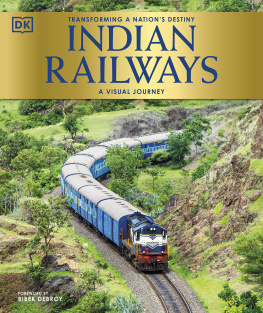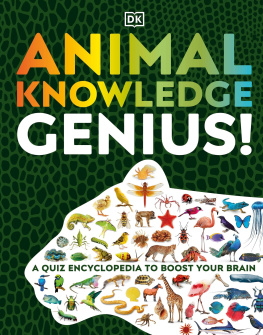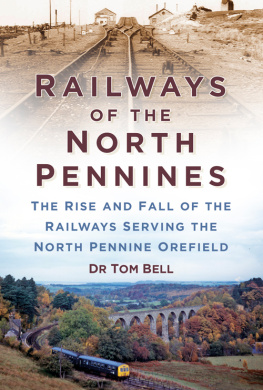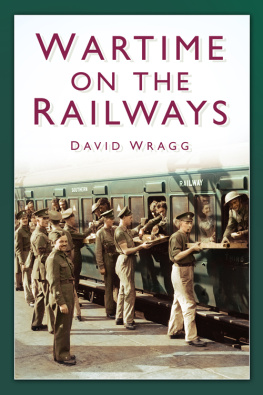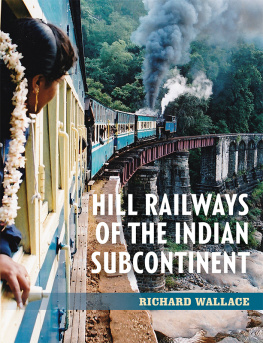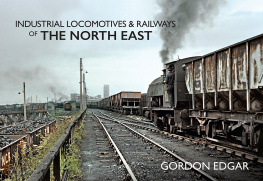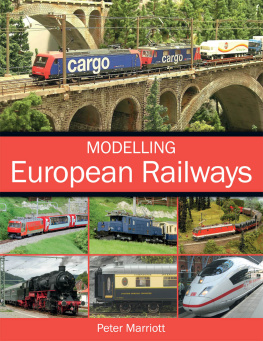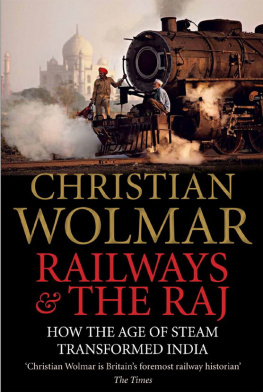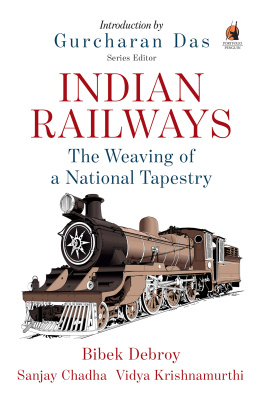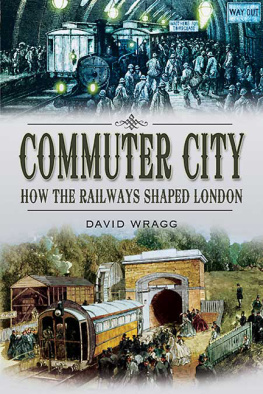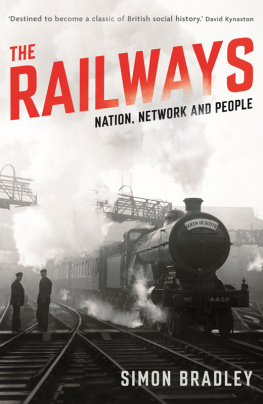CONTENTS
Landmarks
CONTENTS
g
FOREWORD

There is a section of the Indian Railway system known as the hill section. This is one of Indias mountain railways, though certainly not as famous as Darjeeling Himalayan, Kalka Shimla, or Nilgiri Mountain. This hill section is the LumdingHalflongBadarpur stretch and used to be a metre-gauge line, built in the 1890s by what was then Assam Bengal Railway. As the train zigged and zagged, those steam engines had a system of catching, which meant another engine at the rear for pushing. As a child, because my father worked in that part of the world, I recall travelling quite a bit along the hill section. You watched out for tunnels, dark and forbidding. You leant out of the window, heard the gibbons, smelt the smoke, and got coal dust and soot in your hair. On one occasion, the train stopped somewhere and the engine driver, a handkerchief tied around his head and his face covered with soot, came to say hello to my father. My father went up in my esteem. To the children of that generation, an engine driver was a hero. I dare say many boys wanted to become engine drivers then, extremely unlikely today. Have you stood by the side of a railway line at night and seen a train with a steam locomotive thunder past, the red tinge lighting up the drivers face as he shovels coal into the fire? Have you laid a coin on the track, waiting for the train to pass over it and flatten it out?
Those are the bygone pages of history, whiffs of nostalgia for the past and ones childhood. Steam locomotives gave way to diesel and diesel to electric. Every once in a while, a steam engine needed to stop, to top up water and coal, say every 100 miles or 160 km. A stop meant passengers could get down, stretch their legs, and purchase food. Cleaners could get onto the train and clean coaches and toilets. As one switched from steam to diesel/electric traction, these water stops became unnecessary. In the US, there is documentation of ghost towns, created because water stops became redundant. While growing up, those water stops were part of train travel, an opportunity to explore new stations. Once air-conditioning was introduced in trains, you could no longer raise or lower the windows. Somehow, you no longer felt that you were travelling. The journey was more comfortable, but surely less fun. I remember travelling on the Howrah Rajdhani in 1971, soon after it was introduced. There was a library and the food was completely different from what used to be the norm on trains earlier. Back then, civil aviation wasnt that easily accessible and was relatively much more expensive. Trains were the most popular form of travelling long distances, but the Rajdhani and Shatabdi changed our perceptions of trains and train travel. A part of the romance vanished.
There was plenty of romance associated with trains. Trains were introduced in India soon after they were introduced in Britain and elsewhere (1853 is the official year of birth). Therefore, quite a bit of experimentation took place with, and in, Indian Railways. There were so many novel solutions, proposed and often not implemented. For example, Colonel Grant of the Bombay Engineers, who authored a monograph in 1850, thought that permanent railway tracks along the surface of the ground were not practical, because of high mountains, impassable rivers, thick forests and jungles, and herds of cattle and other animals. He proposed that railway tracks should be suspended through the entire length using suspension chains, at a minimum height that was eight feet above the ground, high enough to avoid animals and to allow for a fairly uniform alignment. Extraordinary though the idea was, models of this plan were prepared and exhibited. The Court of Directors of the East India Company posed some questions to the Governor General, Lord Dalhousie. What about periodic rains and inundations, continued action of violent winds, the influence of a vertical sun, the ravages of insects and vermin, the destructive growth of spontaneous vegetation of underwood upon earth and brickwork, the unenclosed and unprotected tracts of country through which the railroad would pass, and the difficulty and expense of securing the services of competent and trustworthy engineers? How would railways in India handle these problems? But the railways were eventually introduced as they were regarded as a marvel.
In 1880, Durgarcharan Ray published a longish story, a bit like a travelogue, in Bengali. This was titled Debganer Martye Agaman (The gods come to earth). The gods, that is, Brahma, Indra, and Varuna, visit earth. More specifically, they visit Calcutta, then the capital. The purpose is to take stock of the effects of British rule in India. This involved the railways as well, as they took a train to Calcutta and were barred from entering the waiting room at the railway station, because the definition of gentlemen who were entitled to use the waiting room did not include the non-British, gods or otherwise. But the gods were so impressed that they resolved to replicate many of these marvels, including the railways, in heaven.
The younger generation doesnt identify with railways. With civil aviation expanding and more airports being built, combined with better roads and more comfortable cars, who travels on trains? Who identifies with trains? The ones that do are the older generation, who identify with strange objects such as steam locomotives. On rare occasions, the young may visit the National Railway Museum, or the Rewari Heritage Steam Locomotive Museum, or the other railway museums and heritage galleries or parks. There are 34 of these and three more are being developed. But those will be rare occasions. Until bullet trains and better stations start to wean people back towards train travel, even multi-modal travel, who will tell them about this heritage and legacy? Even when they are drawn back towards train travel, this will be a different kind of train travel, different from the history. Yes, there are books on the history of railways in India, several of them in fact. However, those are generally academic and unattractive, somewhat boring to read. I am delighted this present volume is being brought out, delightful in pictures and content. Across seven chapters, it takes us from the beginnings (those beginnings were in the 1830s, much before 1853) to the present and the future. As this book is being published, a series of reforms have been introduced for the Indian Railways by the government. The Indian Railways will never be the same. The future looks different. But this volume is a wonderful way to take stock of the past.

Bibek Debroy
An economist by profession, Bibek Debroy is currently Chairman of the Economic Advisory Council to the Prime Minister of India. He has written and edited several books, including Indian Railways: The Weaving of a National Tapestry (2017) and The Railway Chronicles (2019).
g
RAILWAYS IN THE WORLD
As the first train chugged along two parallel lines of steel, one thing was inevitable the world was going to change. Men and material would move, as if compressing time and swallowing space. The invention of railways has been one of the most extraordinary human endeavours in the world. It is one of the few systems that have been able to keep up with changing times and not crumbled under the weight of rapid-paced development.

